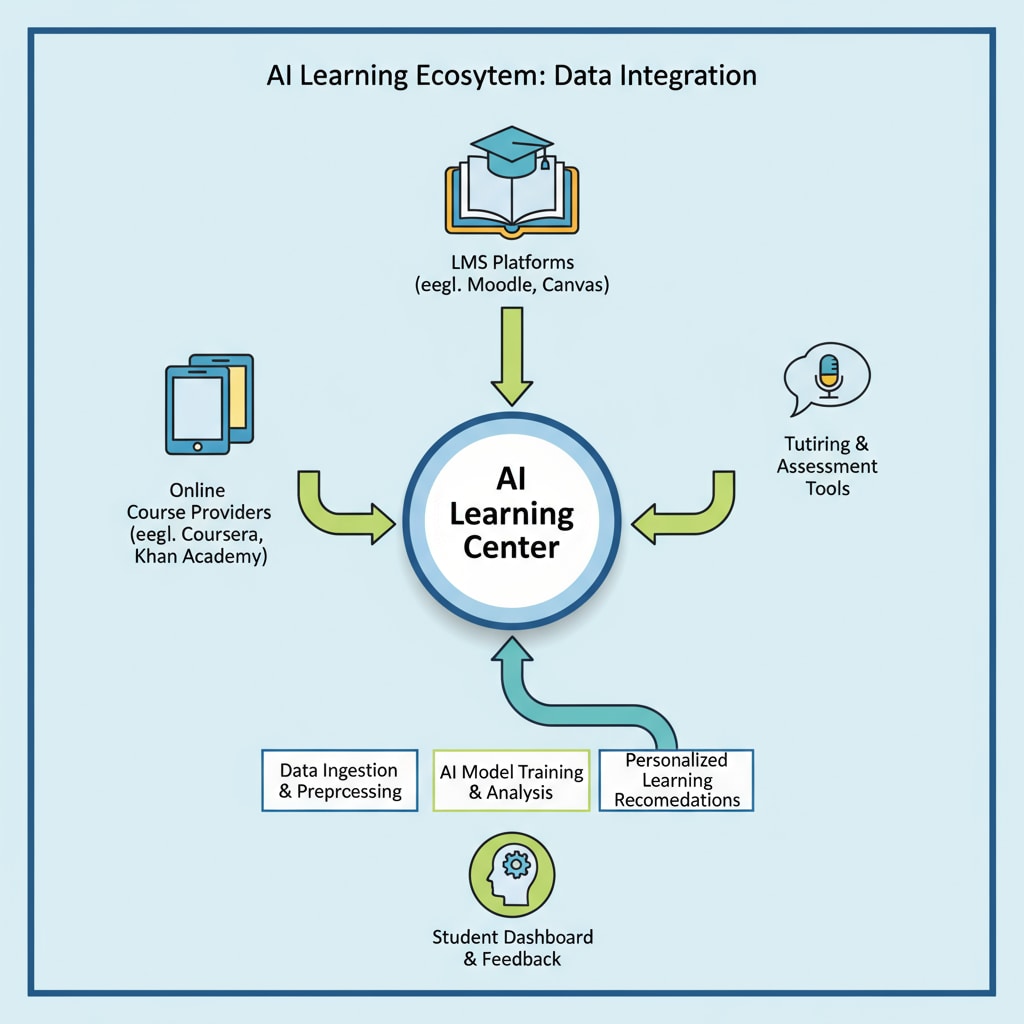In the modern era of K12 education, the concepts of AI learning centers, data integration, and educational platforms are revolutionizing the way educators understand and teach students. Today’s educational environment is filled with numerous platforms, each offering valuable data about students’ performance, progress, and skills. However, teachers often find themselves juggling between these multiple platforms to gather information, which not only reduces teaching efficiency but also makes it difficult to obtain a comprehensive understanding of students’ capabilities.

The Problem of Data Silos in K12 Education
In the K12 educational ecosystem, various educational platforms such as learning management systems, assessment tools, and online tutoring platforms operate independently. These platforms generate a wealth of data about students, including test scores, assignment completion rates, and participation levels. However, this data is often stored in isolated silos, making it challenging for teachers to access and analyze it in a unified manner. For example, a teacher might use one platform for online lessons and another for assessments. As a result, they have to switch between these platforms to get a complete picture of a student’s performance. This fragmentation of data leads to inefficiencies in teaching and limits the ability to provide personalized learning experiences.
The Role of AI Learning Centers in Data Integration
AI learning centers can play a crucial role in addressing this issue. By integrating data from multiple educational platforms, an AI learning center creates a centralized repository of student information. This integration process involves using advanced data analytics and machine learning algorithms to transform raw data into meaningful insights. For instance, an AI learning center can analyze data from different sources to identify patterns in a student’s learning behavior. It can determine whether a student is struggling with a particular subject, or if they are ready to progress to more advanced topics. This unified view of student data enables teachers to make more informed decisions about instruction.

Furthermore, an AI learning center provides a single interface for teachers to access and analyze student data. This interface is designed to be user-friendly and intuitive, allowing teachers to quickly view key metrics and trends. For example, teachers can see a summary of a student’s performance across different subjects, as well as detailed reports on their progress over time. This simplifies the data analysis process and saves teachers valuable time.
Benefits of Unified Student Data for K12 Education
The integration of data through an AI learning center offers several benefits for K12 education. Firstly, it enables精准教学干预. Teachers can identify students who are at risk of falling behind and provide targeted support. For example, if a student is consistently performing poorly in math, the teacher can use the insights from the AI learning center to develop a personalized intervention plan. This plan could include additional tutoring, targeted practice exercises, or alternative teaching methods.
In addition, unified student data allows for the design of个性化学习路径. Every student has unique learning needs and preferences. By analyzing data from multiple sources, an AI learning center can help teachers create customized learning plans for each student. These plans can be adjusted in real-time based on the student’s progress and performance. For example, if a student shows a strong interest and aptitude in a particular subject, the teacher can provide more advanced materials and opportunities for exploration.
In conclusion, the development of AI learning centers that integrate data from multiple educational platforms is a significant step forward in K12 education. By breaking down data silos, these centers provide a comprehensive view of student capabilities, enabling teachers to deliver more effective instruction and create personalized learning experiences. As technology continues to evolve, the potential of AI learning centers to transform education is immense.
Readability guidance: The article uses short paragraphs and lists to summarize key points. Each H2 section provides a list of related ideas. The proportion of passive voice and long sentences is controlled, and transition words are added throughout the text for better flow.


